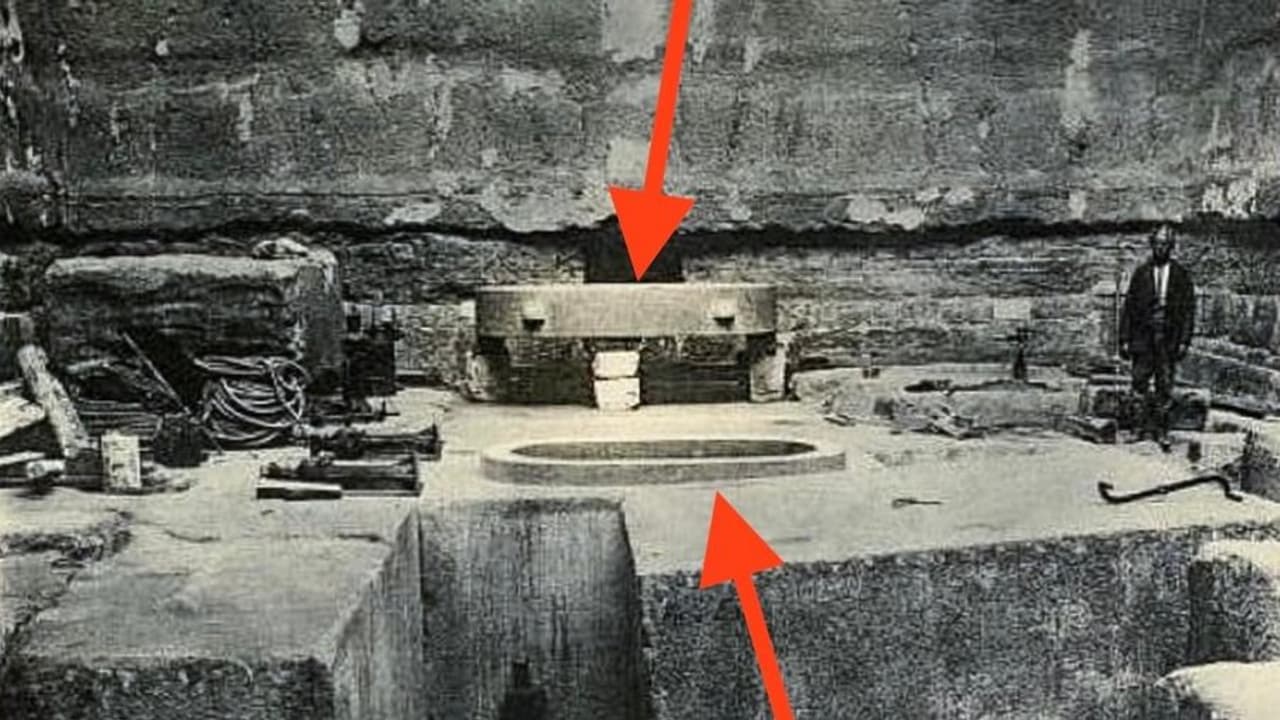Science
Egypt’s Zawyet El Aryan: Secrets of a T-Shaped Shaft Unveiled

Located just three miles from the renowned Giza Pyramids, the archaeological site of Zawyet El Aryan has long captured the imagination of researchers and enthusiasts alike. Often referred to as Egypt’s own Area 51, this enigmatic site has been under military control for decades, limiting access and fueling speculation about its true purpose.
The site garnered scholarly interest in the early 1900s when archaeologist Alessandro Barsanti discovered a massive T-shaped shaft carved from solid limestone. This impressive pit, nearly 100 feet deep, features walls lined with enormous granite blocks, showcasing the advanced techniques of ancient builders. At the center of the shaft, Barsanti found an oval granite vat, sealed with a precisely fitted lid, which reportedly contained traces of an unidentified substance now lost to history.
Unraveling the Mysteries
Scholars remain divided over the site’s intended function. Some theorize it was meant to be a pyramid that was never completed, as no significant structure was ever built above the shaft. Intriguingly, graffiti inscribed on the chamber walls includes the term ‘Seba,’ which some interpret as an ancient Egyptian reference to a ‘gateway to the stars.’
Independent researcher Derek Olsen discussed Zawyet El Aryan on the Matt Beall Limitless podcast, suggesting that the structure may have been conceived as a vessel for cosmic travel or spiritual ascension. The scale and precision of its construction—massive granite floors, smooth limestone walls, and the sealed vat—have led to ongoing speculation regarding its ceremonial or technological significance.
The mystery surrounding Zawyet El Aryan deepened in the mid-1960s when the Egyptian military took control of the site, halting all modern excavations and tours. Today, Barsanti’s early photographs remain the primary documentation of this intriguing complex. Among his findings were inscriptions in black and red ink, including the enigmatic phrase ‘Seba-[unknown]-Ka,’ which is believed to translate loosely to ‘star’ and ‘vital essence’ or ‘life force.’
Debate Among Scholars
Olsen argues that these inscriptions might signify a “gateway to the stars,” implying that the ancient Egyptians sought to transcend earthly limitations. In contrast, mainstream scholars contend that such inscriptions likely represent a builder’s name or a significant historical figure.
The T-shaped shaft itself, carved directly from bedrock, remains unfinished. Its chamber floors consist of massive granite blocks, each approximately 15 feet long, 8 feet thick, and weighing up to 18,000 pounds. The walls, while remarkably smooth, have not been covered in additional stone, leaving the monumental limestone exposed.
Zawyet El Aryan is often associated with the 3rd or 4th Dynasties, possibly serving as the foundation for a pyramid complex that never materialized. Others propose that it could have functioned as an experimental or ceremonial chamber. Olsen emphasizes the extraordinary engineering feat involved in moving such massive granite blocks into place. He questions, “Why would you need a 10-foot-tall granite block on the floor when it’s naturally limestone?”
The sealed vat measures approximately 10 feet long, 7 feet wide, and 5 feet deep, suggesting a ritual or functional purpose that has long since been forgotten. Barsanti’s team also reported finding a damaged dedication tablet bearing the name of King Djedefre, which may link the complex to this Fourth Dynasty ruler. Nonetheless, the authenticity and historical significance of this claim remain hotly contested among scholars.
Olsen notes similarities with other ancient Egyptian monuments, including the Great Pyramid, the Serapeum, and the Saqqara pyramid, all of which feature massive granite boxes. He points out, “We are seeing a theme of this huge granite floor and a lid-like structure,” indicating a potential architectural or ritual motif that continues to elude understanding.
As interest in Zawyet El Aryan grows, the quest to uncover its secrets persists. With limited access and ongoing debates about its historical context, this archaeological marvel may hold answers to questions about ancient Egyptian civilization and its profound connection to the cosmos.
-

 World5 months ago
World5 months agoSBI Announces QIP Floor Price at ₹811.05 Per Share
-

 Lifestyle5 months ago
Lifestyle5 months agoCept Unveils ₹3.1 Crore Urban Mobility Plan for Sustainable Growth
-

 Science4 months ago
Science4 months agoNew Blood Group Discovered in South Indian Woman at Rotary Centre
-

 World5 months ago
World5 months agoTorrential Rains Cause Flash Flooding in New York and New Jersey
-

 Top Stories5 months ago
Top Stories5 months agoKonkani Cultural Organisation to Host Pearl Jubilee in Abu Dhabi
-

 Sports4 months ago
Sports4 months agoBroad Advocates for Bowling Change Ahead of Final Test Against India
-

 Science5 months ago
Science5 months agoNothing Headphone 1 Review: A Bold Contender in Audio Design
-

 Top Stories5 months ago
Top Stories5 months agoAir India Crash Investigation Highlights Boeing Fuel Switch Concerns
-

 Business5 months ago
Business5 months agoIndian Stock Market Rebounds: Sensex and Nifty Rise After Four-Day Decline
-

 Sports4 months ago
Sports4 months agoCristian Totti Retires at 19: Pressure of Fame Takes Toll
-

 Politics5 months ago
Politics5 months agoAbandoned Doberman Finds New Home After Journey to Prague
-

 Top Stories5 months ago
Top Stories5 months agoPatna Bank Manager Abhishek Varun Found Dead in Well









